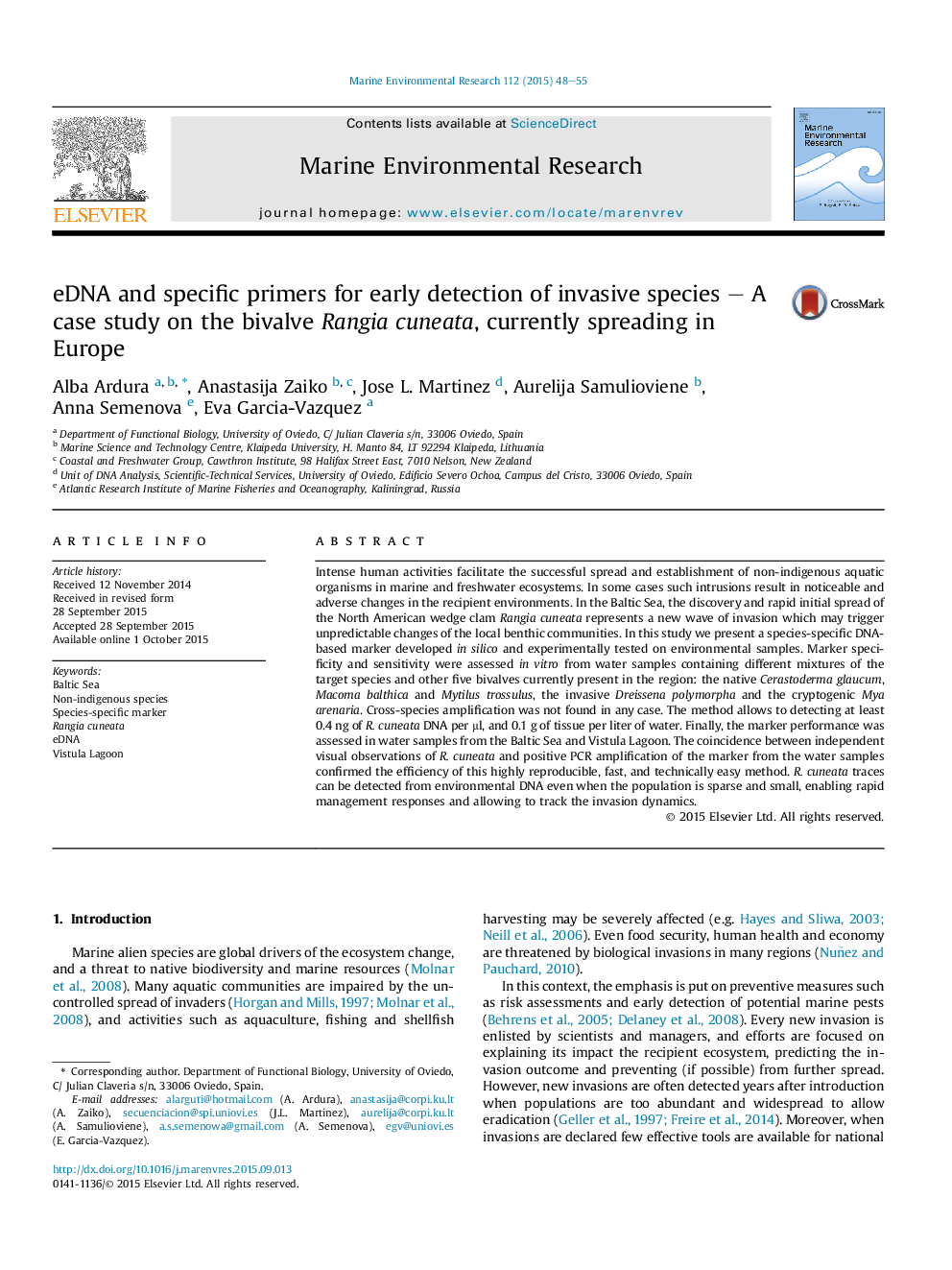| کد مقاله | کد نشریه | سال انتشار | مقاله انگلیسی | نسخه تمام متن |
|---|---|---|---|---|
| 6387685 | 1328236 | 2015 | 8 صفحه PDF | دانلود رایگان |

- Traditional sampling tools are insufficient to detect new invasions.
- Developing and testing species-specific molecular markers for early detection of invasive species.
- Assessment of Rangia cuneata distribution using eDNA.
- Species-specific markers for screening environmental samples.
Intense human activities facilitate the successful spread and establishment of non-indigenous aquatic organisms in marine and freshwater ecosystems. In some cases such intrusions result in noticeable and adverse changes in the recipient environments. In the Baltic Sea, the discovery and rapid initial spread of the North American wedge clam Rangia cuneata represents a new wave of invasion which may trigger unpredictable changes of the local benthic communities. In this study we present a species-specific DNA-based marker developed in silico and experimentally tested on environmental samples. Marker specificity and sensitivity were assessed in vitro from water samples containing different mixtures of the target species and other five bivalves currently present in the region: the native Cerastoderma glaucum, Macoma balthica and Mytilus trossulus, the invasive Dreissena polymorpha and the cryptogenic Mya arenaria. Cross-species amplification was not found in any case. The method allows to detecting at least 0.4 ng of R. cuneata DNA per μl, and 0.1 g of tissue per liter of water. Finally, the marker performance was assessed in water samples from the Baltic Sea and Vistula Lagoon. The coincidence between independent visual observations of R. cuneata and positive PCR amplification of the marker from the water samples confirmed the efficiency of this highly reproducible, fast, and technically easy method. R. cuneata traces can be detected from environmental DNA even when the population is sparse and small, enabling rapid management responses and allowing to track the invasion dynamics.
Journal: Marine Environmental Research - Volume 112, Part B, December 2015, Pages 48-55